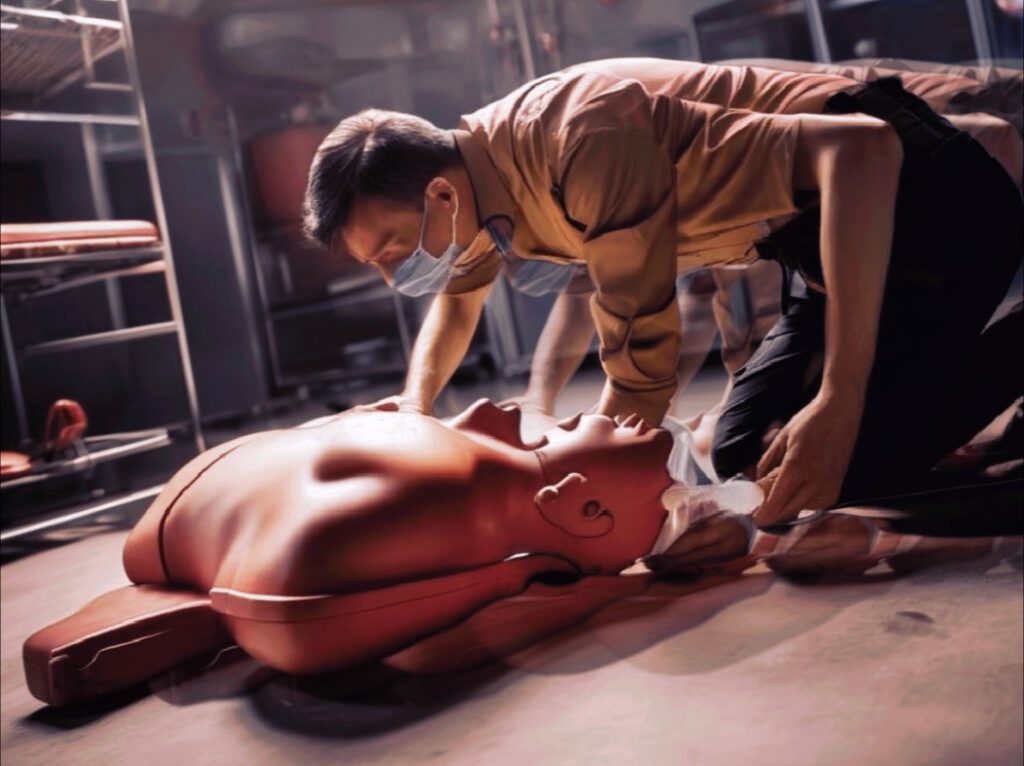Many countries around the world have legal regulations that affect helping in emergency situations. In Germany, according to Section 323c of the German Criminal Code (failure to provide assistance), you are obliged to provide first aid. For example, if you witness an accident and see that someone is injured, you must help or at least call for help. Nobody has to heroically storm into a burning building. If your own safety is at risk, you obviously cannot be obliged to help. The right way to act depends on the situation.
Anyone who does not help in an open emergency situation can be punished with a fine or imprisonment of up to one year if help could have been provided and this was not done. Legal consequences are not to be expected if you find yourself in a situation where there is no harm and no danger to life. You also cannot be punished if you do not have suitable resources or knowledge to help adequately. If first aid would be life-threatening for you, you can withdraw from the obligation to help.
It is always advisable to provide some form of assistance in an emergency situation if it seems possible. Although you are not legally obliged to act in all situations, it is socially expected that people will help others in distress. If you feel unsafe in such a situation, calling 911 is a sensible and legally safe option.
First Aid explained Step-by-Step
Although the correct sequence of first aid measures may vary depending on the situation, there is a generally accepted step-by-step guide for an emergency:
1. Safety – Check the surrounding area for possible hazards.
2. Consciousness – Approach the person and gently shake them to see if they are conscious.
3. Emergency – Call 911 (United States) or 112 (Europe) and pass on all necessary information.
4. Breathing – Check that the person is breathing normally.
5. Cardiopulmonary resuscitation (CPR) – If the person is not breathing, give 30 chest compressions (to a depth of about 5-6 cm and a rate of 100-120 compressions per minute), then 2 breaths. If you are unsure or do not want to do rescue breaths, only do chest compressions.
6. Recovery position – If the person is breathing again, place them in the recovery position to maintain a clear airway.
7. Wound care – If there are visible wounds or bleeding, apply pressure and apply a bandage (if possible).
8. Shock – If the person shows signs, lay flat and cover for warmth.
9. Restrain – Monitor condition and stay until professional help arrives.

Safety is crucial before you act. Assess the situation and the surroundings properly. Are there any dangers such as traffic, fire, hazardous materials or other potential threats? Is the person possibly in a dangerous situation that could also spread to you? If you are unsure, keep a certain safe distance to better assess the situation and avoid sources of danger. Are there other people nearby who could possibly help or pose additional danger? Be sure to pay attention to loud noises.
When people are no longer responsive
Checking consciousness is an important part of first aid. Speak to the person loudly and clearly: “Are you OK?” or “Can you hear me?”. If the person does not respond, try using a louder voice. If there is no response, then gently touch the person’s shoulders and shake them slightly while you continue speaking. Signs of unconsciousness include open eyes with no noticeable reaction, pale or blue skin, especially on the face and lips, or difficulty breathing.
Shock is a life-threatening condition that requires immediate medical attention. If possible, lay the person flat on their back to help return blood to the heart. Raise the person’s legs slightly (about 8 inches) to encourage blood flow. Use a pillow or other cushioning if available, but avoid this position if injuries to the back or legs are suspected. Keep the person warm, e.g. with a blanket or clothing. Shock can often be accompanied by hypothermia. Pay attention to the person’s breathing and pulse, and try to calm them down.
Sometimes you just have to improvise
If you don’t have a first aid kit with sterile wound dressings available, there are still some steps you can take to treat an injury. Use disinfectant gel or wash your hands thoroughly with soap and water. Use clean or boiled water to gently rinse the wound and remove any dirt or foreign objects. Apply gentle pressure to the wound to stop bleeding. If bleeding is severe, maintain pressure and do not try to drain the blood.
Find a clean, dry cloth or piece of clothing that you can use. A clean cloth napkin, piece of clothing, or towel can be placed over the wound. If possible, secure the cloth with a tie, belt, or other piece of fabric. Make sure the bandage is not too tight to prevent blood flow. Avoid movements that may further strain or open the wound. Watch for signs of infection, such as redness, swelling, pus, or increasing pain.
First aid: Why commitment is important | How does it work | Where can I learn it – all articles at a glance.

